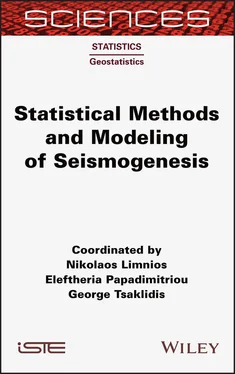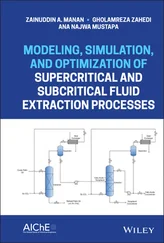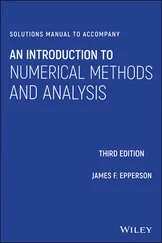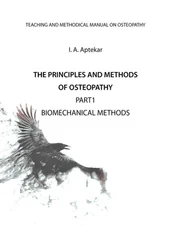– the average initial stress budget on the fault;
– the variability of the initial stress budget on each cell (e.g. 5%);
– the stress threshold necessary for event nucleation (stress_thresh);
– the value of the strength reduction coefficient (strength_red_coeff, S-R) (e.g. 0.05) ; zero means no strength reduction;
– the multiplying factor to be used for discouraging the propagation of the rupture on the strike direction (aspect_ratio, A-R) (e.g. 2.5); infinity means no limitation at all;
– the time step of the simulations;
– the total duration of the synthetic catalog;
– a warm up time before the beginning of the catalog.
An initial stress budget is randomly assigned to every cell. The first nucleation point is selected as the cell where the largest stress budget is assigned, if it exceeds the minimum stress budget required for event nucleation. Otherwise, the program proceeds by one time step, adding the tectonic stress rate for one time step to every cell, and the search for the nucleation point is started again. If the nucleation cell is found, the stress budget on the nucleation cell is decreased by a stress drop Δ σ = 3.3 · 10 6Pa. The stress budget on the other cells is increased on the basis of the stress transfer computed on each cell:

where

is the seismic moment released by the rupture on a single cell (see Console and Catalli 2006) and dist is the distance in km between the centers of two cells.
1) the procedure for the propagation of the rupture on the neighboring cells is started;
2) set the number of ruptured cells of the event (Ncell_ev) to 1;
3) find the smallest of Ncell_ev and · aspect_ratio) and call it Ncell_min;
4) compute
5) starting from 1 to Ncell_ev, find the cell with the largest stress budget among all those already ruptured in the event with the addition of all bordering those already ruptured;
6) the largest stess budget exceeds the threshold value stress_thresh diminished by Strength_red?
7) if not, go to (2), if yes, go on;
8) decrease the stress budget of the ruptured cell by a value equal to Δσ;
9) increase the value of the stress budget of any other cell by ΔCFF computed as described above for the nucleation rupture;
10) increase Ncell_ev by 1;
11) go to (1);
12) store the event parameters;
13) the time, the event sequential number and other parameters of the event are written on the output file.
A cell can be ruptured more than once in the same event. The program proceeds by one time step, adding the tectonic slip rate for one time step to every cell, and the search for a new nucleation point starts again. The process stops when the time assigned for the output catalog is exceeded.
Barall, M. and Tullis, T.E. (2015). The performance of triangular fault elements in earthquake simulators. Seismol. Res. Lett ., 87(1), 164–170.
Burridge, R. and Knopoff, L. (1967). Model and theoretical seismicity. Bull. Seism. Soc. Am ., 57, 341–371.
Christophersen, A., Rhoades, D.A., Colella, H.V. (2017). Precursory seismicity in regions of low strain rate: Insights from a physics-based earthquake simulator. Geophys. J. Int ., 209, 1513–1525.
Colella, H.V., Dieterich, J.H., Richards-Dinger, K.B. (2011). Multi-event simulations of slow slip events for a Cascadia-like subduction zone. Geophys. Res. Lett ., 38.
Console, R. and Catalli, F. (2006). A rate-state model for aftershocks triggered by dislocation on a rectangular fault: A review and new insights. Ann. Geophys ., 49(6), 1187–1201.
Console, R., Carluccio, R., Papadimitriou, E., Karakostas, V. (2015). Synthetic earthquake catalogs simulating seismic activity in the Corinth gulf, Greece, fault system. J. Geophys. Res ., 120(1), 326–343.
Console, R., Nardi, A., Carluccio, R., Murru, M., Falcone, G., Parsons, T. (2017). A physics-based earthquake simulator and its application to seismic hazard assessment in Calabria (southern Italy) region. Acta. Geophys ., 65, 243–257.
Console, R., Chiappini, M., Minelli, L., Speranza, F., Carluccio, R., Greco, M. (2018a). Seismic hazard in southern Calabria (Italy) based on the analysis of a synthetic earthquake catalog. Acta Geophysica , 66, 931–943.
Console, R., Vannoli, P., Carluccio, R. (2018b). The seismicity of the Central Apennines (Italy) studied by means of a physics-based earthquake simulator. Geophys. J. Int ., 212, 916–929.
Dieterich, J.H. (1994). A constitutive law for rate of earthquake production and its application to earthquake clustering. J. Geophys. Res ., 99, 2601–2618.
Dieterich, J.H. and Richards-Dinger, K.B. (2010). Earthquake recurrence in simulated fault systems. Pure Appl. Geophys ., 167, 1087–1104.
Dieterich, J.H., Richards-Dinger, K.B., Kroll, K.A. (2015). Modeling injection-induced seismicity with the physiscs-based earthquake simulator RSQSim. Seism. Res. Lett ., 86(4), 1–8.
Field, E.H. (2015). Computing elastic-rebound motivated earthquake probabilities in unsegmented fault models: A new methodology supported by physics-based simulators. Bull. Seism. Soc. Am ., 105(2A), 544–559.
Field, E.H. (2019). How physics-based earthquake simulators might help improve earthquake forecasts. Seism. Res. Lett ., 9.
Goes, S.D.B. and Ward, S.N. (1994). Synthetic seismicity for the San Andreas Fault. Ann. Geophys ., 37, 1495–1513.
Gulia, L. and Wiemer, S. (2019). Real-time discrimination of earthquake foreshocks and aftershocks. Nature , 574(7777), 193–199 [Online]. Available at: doi: 10.1038/s41586-019- 1606-4 [Accessed 9 October 2019].
Gulia, L., Tormann, T., Wiemer, S., Hermann, M., Seif, S. (2016). Short-term probabilistic earthquake risk assessment considering time-dependent b-values. Geoph. Res. Lett , 43(3), 1100–1108.
Khodaverdian, A., Zafarani, H., Rahimian, M. (2016a). Using a physics-based earthquake simulator to evaluate seismic hazard in NW Iran. Geophys J. Int ., 206(379–394), 2624–2639.
Khodaverdian, A., Zafarani, H., Schultz, K.W., Rahimian, M. (2016b). Recurrence time distributions of large earthquakes in Eastern Iran. Bull. Soc. Seismol. Am ., 106(6), 2624–2639.
Mele, F.M., Marcocci, C., Bono, A., Marchetti, A. (2010). ISIDe, Italian Seismological Instrumental and parametric Data-base. INGV, CNT [Online]. Available at: http://iside.rm.ingv.it/iside/standard/index.jsp.
Montuori, C., Murru, M., Falcone, G. (2016). Spatial variation of the b-value observed for the periods preceding and following the 24 August 2016, amatrice earthquake (ml6.0) (Central Italy). Annals of Geophysics , 5, 2016.
Mosca, I., Console, R., D’Addezio, G. (2012). Renewal models of seismic recurrence applied to paleoseismological and historical observations. Tectonophysics , 564, 54–67.
Parsons, T. and Geist, E.L. (2009). Is there basis for preferring characteristic earthquakes over Gutenberg–Richter distributions on individual faults in probabilistic earthquake forecasting? Bull. Seismol. Soc. Am ., 99, 0120080069.
Parsons, T., Console, R., Falcone, G., Murru, M., Yamashina, K. (2013). Comparison of characteristic and Gutenberg–Richter models for time-dependent M ≥ 7.9 earthquake probability in the Nankai–Tokai subduction zone. Japan. Geophys. J. Int , 190(3),1673–1688.
Читать дальше














